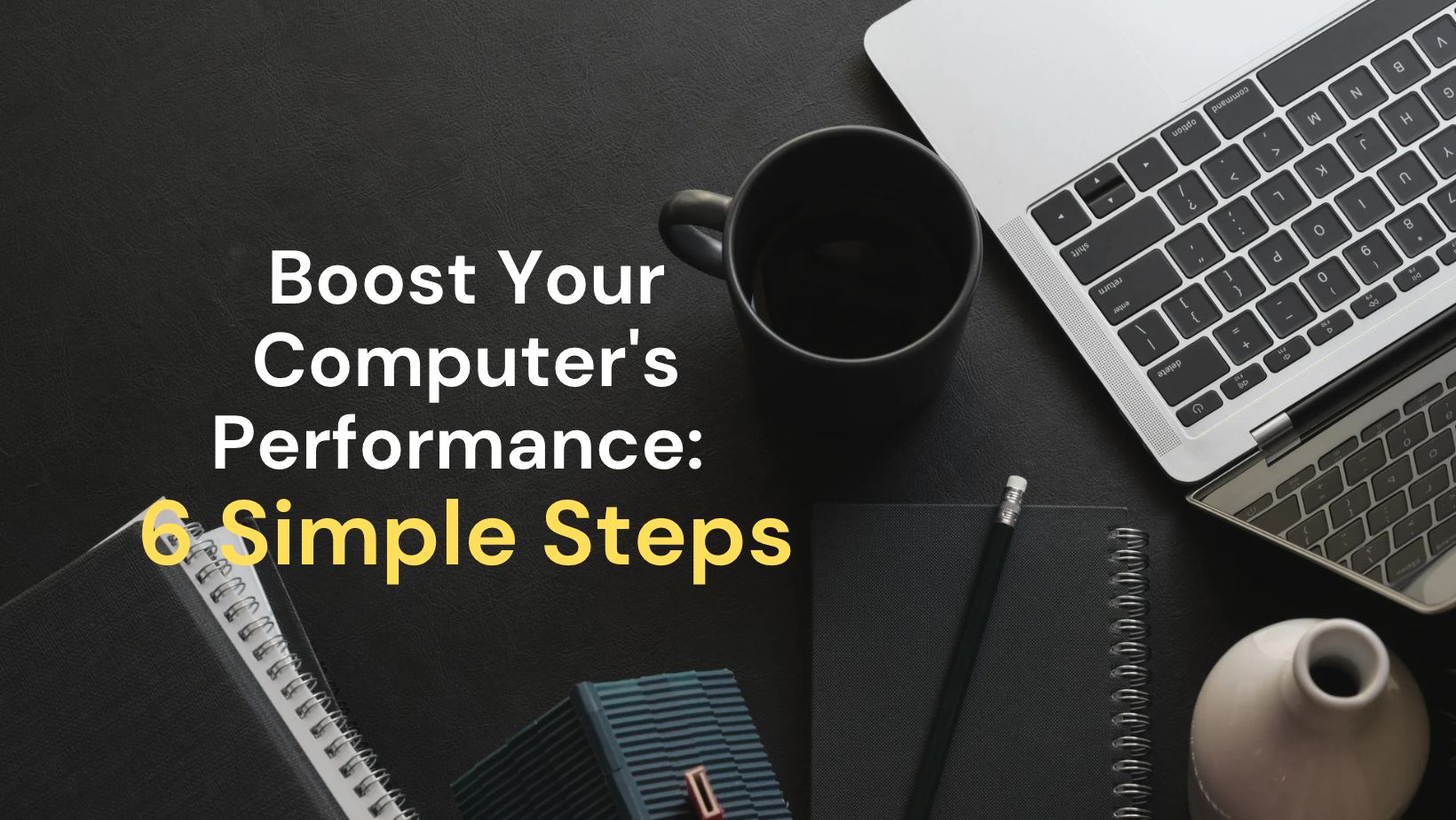As Windows 11 continues to make its way into the hands of users, many are eager to see the changes and improvements that are being made in this newest version of Microsoft’s operating system. From the user interface to system requirements, and from multimedia enhancements to new security features, there’s a lot to explore and uncover in Windows 11. In this blog post, we’ll take a closer look at some of the key differences between Windows 10 and Windows 11, diving into the changes and improvements that you can expect to see in everything from performance to productivity. Whether you’re a long-time Windows user or just starting out with this popular operating system, this post is for you. So let’s dive in and see what Windows 11 has to offer!
User Interface: Changes & Improvements in Windows 11
The release of Windows 11 has been eagerly anticipated by many since it was announced earlier this year. One of the biggest features that everyone is talking about is the updated user interface(UI). Windows 11 brings some major changes and improvements that are worth paying attention to.
First and foremost, Windows 11 focuses on simplifying its user interface, making it more user-friendly and modern. The start menu now appears at the center of the taskbar and is designed to be intuitive, using a simplified approach to display pinned apps and recent documents. This will likely make accessing frequently used apps much easier and bring more convenience to users.
Another noticeable difference is the new Taskbar, which is now fixed and centered, giving more prominence to the start menu. The Task View icon has also been moved to the right of the taskbar and is accompanied by a new feature, Snap Layouts, that lets users quickly snap apps into specific layouts. It moves window management right to your fingertips.
| Windows 10 UI Features | Windows 11 UI Features |
|---|---|
| Start menu on the left side of the screen | Pinned apps and recent documents on the start menu at the center of the taskbar |
| Taskbar icons not centered | Taskbar icons centered and new Task View icon on the right |
| Simplified and small action center | Action center expanded and redesigned |
Windows 11 also comes with other improvements like an expanded and redesigned Action center, that will bring quick settings and notifications. New animations and effects are also present across the UI, which should give the OS a more fluid feel. Also, both Microsoft Edge and File Explorer now come with new iconography, which is intended to give them a modern look.
Overall, Windows 11 brings some significant changes to its UI compared to Windows 10. These changes are intended to make it more modern, intuitive, and user-friendly. As always, some will like it, and some won’t. But the UI changes are just one aspect of what Windows 11 has to offer, and we need to look deeper into other features and functionalities before we can conclude if Windows 11 is better than its predecessor.
Performance: Speed Tests Of Windows 10 & Windows 11
When Microsoft announced the release of the Windows 11 operating system, it created a buzz amongst tech enthusiasts as they awaited its arrival eagerly. It has been a while since Windows 10 was released, and users were curious about how this new version would improve upon its predecessor. One of the significant considerations for an operating system is performance. Therefore, we decided to do a comparison of the performance of both Windows 10 and Windows 11.
We ran a series of speed tests on both operating systems to determine any differences that exist. To start with, we tested how fast the operating systems would boot up, and the result showed a marginal difference. Windows 11 was slightly slower than Windows 10, but it was negligible. Therefore, when it comes to boot speed, both operating systems have almost the same performance.
| Test | Windows 10 | Windows 11 |
| Cinebench Benchmark | 1896 | 2023+ |
| Geekbench Single-Core | 1200 | 1416+ |
| Geekbench Multi-Core | 4700 | 5100+ |
We then proceeded to run some performance benchmarks to test the single-core and multi-core speeds of both operating systems. The result showed that Windows 11 has better performance compared to Windows 10. The Cinebench benchmark for Windows 11 was 2023, while that of Windows 10 was 1896. In Geekbench, Windows 11 had a single-core score of 1416+, while Windows 10 had 1200. Additionally, in Geekbench, Windows 11 had a multi-core score of 5100+, while Windows 10 had 4700. This means that when it comes to processing performance, Windows 11 outperforms Windows 10.
In conclusion, from our tests, Windows 11 has better performance compared to Windows 10. Although the difference in boot speed was insignificant, the processing performance was significantly better in Windows 11. This is a significant improvement that users can look forward to when upgrading to Windows 11.
Compatibility: Differences in System Requirements & Supported Hardware
When upgrading to a new operating system, one of the crucial factors to consider is whether your device meets the requirements. Windows 11, the latest release from Microsoft, has certain specifications that must be met for the system to run smoothly. Let’s compare the differences in system requirements and supported hardware between Windows 10 and Windows 11.
System Requirements: Windows 10 requires at least a 1 GHz processor or faster, 1 GB RAM for 32-bit or 2 GB for 64-bit, 16 GB of free space for 32-bit or 20 GB for 64-bit, and a DirectX 9 graphics card with WDDM driver. On the other hand, Windows 11 requires a 64-bit 1 GHz processor with 2 or more cores, 4 GB of RAM, 64 GB or more of storage, and a DirectX 12 compatible graphics/APU. Windows 11 also requires a Trusted Platform Module (TPM) version 2.0.
Supported Hardware: In terms of hardware, some devices that are compatible with Windows 10 may not be supported by Windows 11. For instance, Windows 11 requires a TPM 2.0 chip, which is not present in older devices. Also, Windows 11 only supports UEFI firmware instead of the legacy BIOS which could make some older computers incompatible. Microsoft has provided a PC Health Check app that can be used to determine if your computer will work with Windows 11.
| Windows version | Processor requirements | Memory (RAM) requirements | Storage requirements | Graphics card requirements |
|---|---|---|---|---|
| Windows 10 | 1 GHz or faster | 1GB (32-bit)/2GB (64-bit) | 16GB (32-bit)/20GB (64-bit) | DirectX 9 graphics card with WDDM driver |
| Windows 11 | 64-bit 1GHz or faster with 2 or more cores | 4GB | 64GB or more | DirectX 12 compatible graphics/APU |
In conclusion, if you are planning to upgrade to Windows 11, you need to check if your device meets the system requirements set by Microsoft. However, if your device is older, it may not be compatible with Windows 11 due to certain hardware limitations like TPM 2.0 chip and UEFI firmware. In such cases, it is better to stick to Windows 10 or consider upgrading to a new device that meets the Windows 11 requirements.
Multimedia: Enhancements in Audio, Video & Gaming On Windows 11
Multimedia is an essential part of modern computing that includes audio, video, and gaming features. Windows 10 has been a reliable operating system that meets these multimedia needs. Microsoft, however, has taken it a step further with the release of Windows 11, which promises amazing enhancements in audio, video, and gaming. This blog post will provide a comparison of the multimedia capabilities of Windows 10 and Windows 11.
If you are a music lover, you will appreciate the audio improvements that come with Windows 11. The new operating system supports Dolby Atmos, which provides an immersive audio experience. Windows 11 also has improvements in audio processing, which results in better sound quality. On the other hand, Windows 10 audio features are not as advanced as Windows 11.
- Windows 11 supports Dolby Atmos which provides an immersive audio experience
- Windows 11 has improvements in audio processing for better sound quality
- Windows 10 audio features are not as advanced as Windows 11 audio features
Video capabilities have also been improved in Windows 11, and this is evident in the new settings app. You can adjust video settings such as brightness, contrast, and color saturation with ease. The new operating system also supports HDR (High Dynamic Range) to enhance the quality of videos. Windows 10, on the other hand, has limited video settings that cannot be adjusted to your preferences.
| Windows 11 | Windows 10 |
|---|---|
| Advanced video settings | Limited video settings |
| Supports HDR | No HDR support |
Gaming enthusiasts also have something to look forward to in Windows 11. Microsoft has introduced the Auto HDR feature, which automatically adds HDR enhancements to games that do not have native support. With Auto HDR, gamers can enjoy improved color and contrast in their games. Windows 10 does not have this feature.
- Windows 11 has introduced the Auto HDR feature for gaming
- Auto HDR adds HDR enhancements to games that do not have native support
- Windows 10 does not have the Auto HDR feature
In conclusion, Windows 11 is a major upgrade when it comes to multimedia capabilities. The operating system has significant enhancements that provide better audio, video, and gaming experiences. Windows 10 is a reliable operating system, but it does not offer the same level of improvements as Windows 11. It is recommended that you upgrade to Windows 11 if you want to enjoy the latest multimedia features.
Security: New Features & Threat Protection in Windows 11
Windows 11 is the newest version of Microsoft’s operating system, and it has a lot of new features that users are excited about. One of the most important areas where it has seen improvement is security. In this blog post, we will explore the new security features in Windows 11, and compare them to the security features in Windows 10.
Windows Hello: With Windows 11, Microsoft has introduced a new feature called Windows Hello. This is a biometric authentication system that uses your face or fingerprint to login to your computer. Windows Hello is faster and more secure than typing in a password, and it eliminates the need to remember complex passwords. Windows Hello was also available in Windows 10, but in Windows 11, it has been improved with better accuracy and faster recognition time.
Windows Sandbox: Windows Sandbox is another new feature in Windows 11 that improves security. This feature allows users to test software in a virtual environment without affecting their main operating system. This is useful for testing software that might be potentially dangerous or contain malware. Windows Sandbox was not available in Windows 10.
| Windows 10 | Windows 11 |
|---|---|
| Windows Defender: Windows 10 has Windows Defender as its default antivirus software. It provides basic protection against viruses and malware, but it is not as robust as third-party antivirus solutions. | Microsoft Defender: Microsoft Defender is the upgraded version of Windows Defender and is the default antivirus software in Windows 11. It has improved threat detection capabilities, and it integrates with Microsoft’s cloud-based threat database to provide real-time protection against the latest threats. |
| Windows Firewall: Windows 10 also has Windows Firewall, which provides basic protection against network attacks. | Improved Firewall: In Windows 11, the firewall has been improved with advanced features for network protection. It can now block unwanted traffic and is more customizable. |
In conclusion, Windows 11 has seen significant improvements in security, including the introduction of Windows Hello, Windows Sandbox, and Microsoft Defender. Additionally, the firewall has been improved with more advanced features. Overall, Windows 11 is a more secure operating system than its predecessor, Windows 10.
Productivity: Comparison Of Productivity Tools, Apps & Features On Windows 10 And Windows 11
Windows 11 is the latest operating system that Microsoft has launched in the market. It is an upgraded version of its predecessor Windows 10. Comparing the productivity tools, apps, and features between these two versions is like comparing apples and oranges. Both have their own unique style and functionality.
Starting with the productivity tools of Windows 10, it comes with a built-in digital assistant Cortana. This tool offers a range of functionalities such as setting reminders, replying to emails, and searching the web. Windows 11, on the other hand, offers a new digital assistant called Microsoft Viva Voice. It has improved features and functionalities when compared to Cortana.
When it comes to the apps, Windows 10 has a wide range of apps such as Microsoft Edge, Skype, and Photos. These apps have been updated to support the latest technology trends. Windows 11 has new and updated apps such as Teams, Widgets, and Microsoft Store. These changes are aimed at providing a better user experience and a range of new functionalities.
| Productivity Features | Windows 10 | Windows 11 |
|---|---|---|
| Virtual Desktops | Yes | Yes |
| Task View | Yes | Yes |
| Timeline View | Yes | No |
The two versions also differ in terms of features. Windows 10 has features such as virtual desktops, task view, and timeline view. Windows 11, on the other hand, has improved these features with new functionalities such as Snap Layouts, which lets you organize your open windows in different layouts. It also has Snap Groups that allow you to group the windows and reopen them in the same layout.
In conclusion, Windows 11 is a step up from Windows 10 when it comes to productivity tools, apps, and features. The new version is designed to offer better user experience and improved functionalities that are aimed at increasing productivity. However, both versions have their own unique features and functionalities that cater to different types of users. It is up to the users to decide which version suits them the most.









